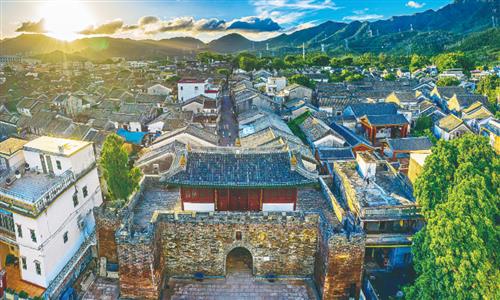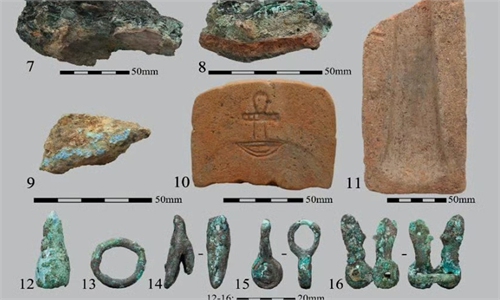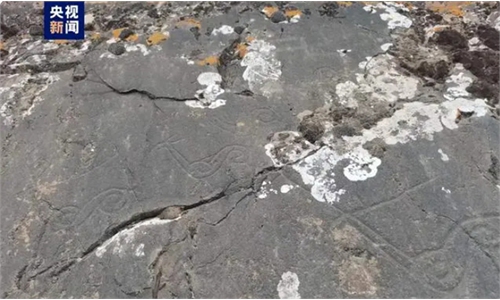ARTS / CULTURE & LEISURE
China safeguards architectural heritage by racing against the unpredictable
China steps up efforts to safeguard cultural relics
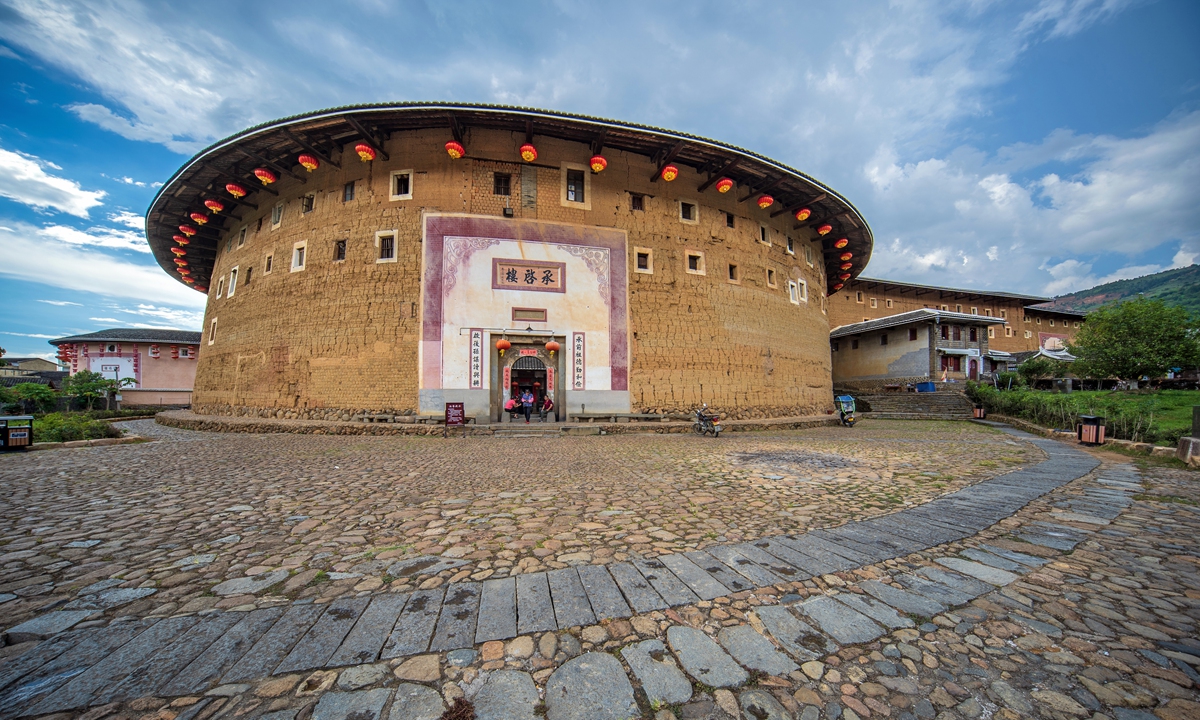
A general view of Tulou in Longyan, East China's Fujian Province Photo: VCG
Including provinces like Zhejiang, Fujian and Guangdong, the southern part of China is currently experiencing unprecedented extreme weather conditions.Downpours and floods, such nature's rages have not only threatened people's lives but also set challenges to the fragile yet precious immovable ancient architecture.
Last week in East China's Fujian Province, a more than 100-year-old ancestral hall, unique to the Hakka culture, collapsed due to rainfall. Similarly, more than 1,700 immovable relics were damaged by rain in North China's Shanxi Province in 2021.
These incidents have prompted Chinese heritage conservation organs and experts to come up with plans for the conservation of such treasures.
'Unavoidable' problem
Located in Longyan, Fujian Province, the ruined ancestral hall is dedicated to Chinese people who have the surname Li. It is one of the most common surnames of people of Chinese descent worldwide. Folk culture expert Xiong Gang told the Global Times that the collapse of the heritage building "can likely reduce one's sense of cultural belonging."
"The reason why architectural relics are significant is not due to their functional values, but their cultural symbolism as well as humanity representations," Wang Huaxin, a protector of ancient architecture, told the Global Times.
During an on-site investigation, experts discovered that the hall's soaking-wet rammed earth wall was the crux to the building's collapse.
Wang told the Global Times that the "rain and floods" were two fatal factors causing harm to the ancient architecture.
Lin Rigeng, a third-generation owner of the Zhencheng Tulou, also in Fujian Province, told the Global Times that in 1966 his 112-year-old building was once almost destroyed by flood.
Tulou is the province's most traditional style of residence. It has also been included in the UNESCO World Heritage list.
"It only takes three to five days for the whole building to collapse if it's submerged in water. Although the building itself is equipped with a drainage system, it is still too old," Lin told the Global Times.
He also added that the current downpour has not caused apparent damage to his building due to maintenance works being carried out at the site regularly.
"Including rains and floods, other conditions like earthquake and debris flow can also destroy architectural relics," Xu Yitao, an architectural archaeologist, told the Global Times.
Xu also said that it is "unavoidable" for ancient buildings to be damaged by nature, and such damages seemed to be even more "common" in China due to the country's huge number of immovable heritage sites.
"China has hundreds of thousands of ancient buildings scattered in the country. Shanxi Province, for example, is known as the old architecture's hometown," Xu emphasized.
In October 2021, days of record-breaking rainfalls in Shanxi Province left over 1,700 ancient buildings and cultural relics damaged.
In Pingyao, renowned for its exceptional preservation as a traditional Chinese city, flooding resulted in significant damage to its ancient city walls constructed in the 14th century.
In Taiyuan, capital city of Shanxi, multiple major historical and cultural sites protected at the national level were damaged to various extent, including the Jin Temple, the most prominent religious complex in Shanxi, and the Tianlongshan Grottoes notable for the Buddhist temples located inside.
In some temples, roofs leaked after days of rainstorms, and the retaining walls collapsed or cracked. Roads to scenic spots were also damaged by landslides because of the saturated soil.
"We have to make systematic prevention plans as well as invent new ways for the protection of architectural relics. We are racing against time," Wang told the Global Times.
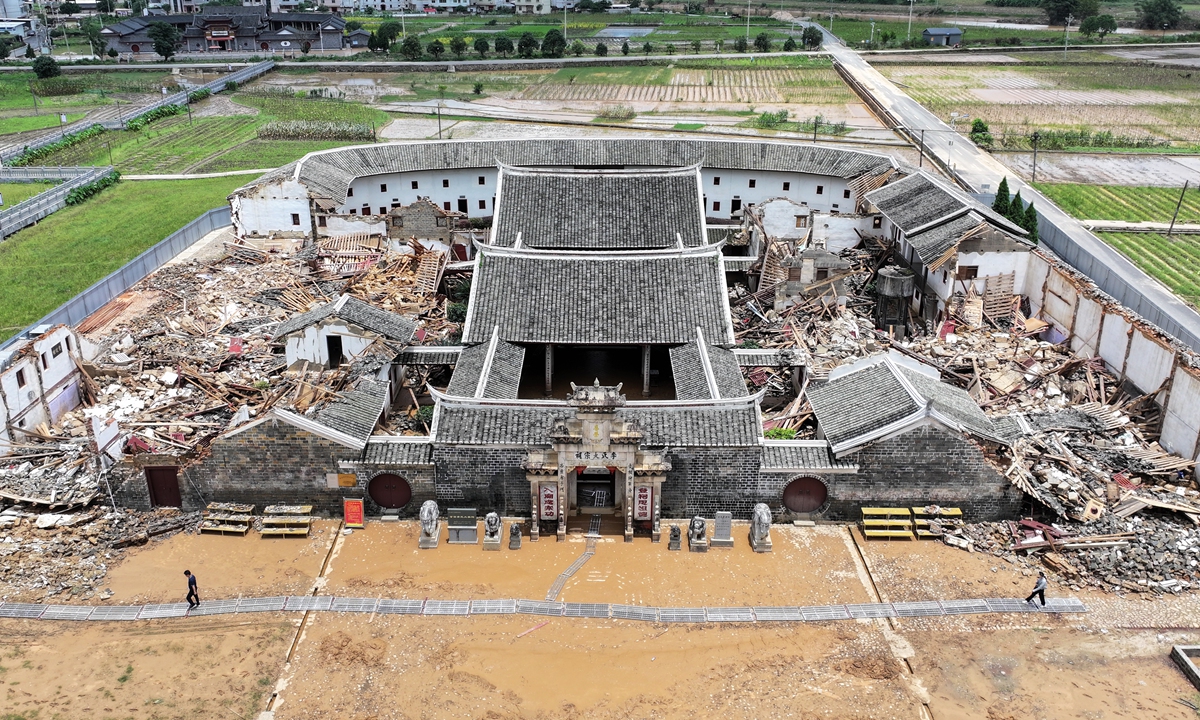
The damaged Li Clan Ancestral Hall in Longyan, Fujian Province Photo: VCG
Double plansThe "Plan A and Plan B" coping method is now widely used in China. The "Plan A" refers to a prevention system that is co-built by technicians, province- or county-level conservation organs as well as the scholarly community. Wang said these different groups are regularly working together to provide "protection and damage-prevention plans for a particular site."
The "Plan B" refers to a series of immediate actions taken to cope with a ruined architecture. Taking the ancestral hall in Fujian as an example, ancient architectural experts immediately arrived at the scene to conduct surveys and research, discussing emergency response and restoration efforts for the site.
Other than such traditional methods, the "adoption program" of ancient architecture has also been launched in provinces like Shanxi. Social organizations or individuals can take their responsibility for the protection and maintenance of a particular site.
"The adoption maneuver aims at engaging the society in protecting heritage sites. The method also follows the country's guidance on opening more heritage sites to the public," Wang noted.
In 2021, China's State Council released a new set of guidelines that prioritize heritage conservation while encouraging the coordination of the protection, utilization, and preservation of heritage sites like ancient buildings and streets.
"Such national guidelines reveal how important China values the sector of cultural heritage," Xu told the Global Times, noting that such policy support is "significant for ancient building conservation, especially in the financial sector."
